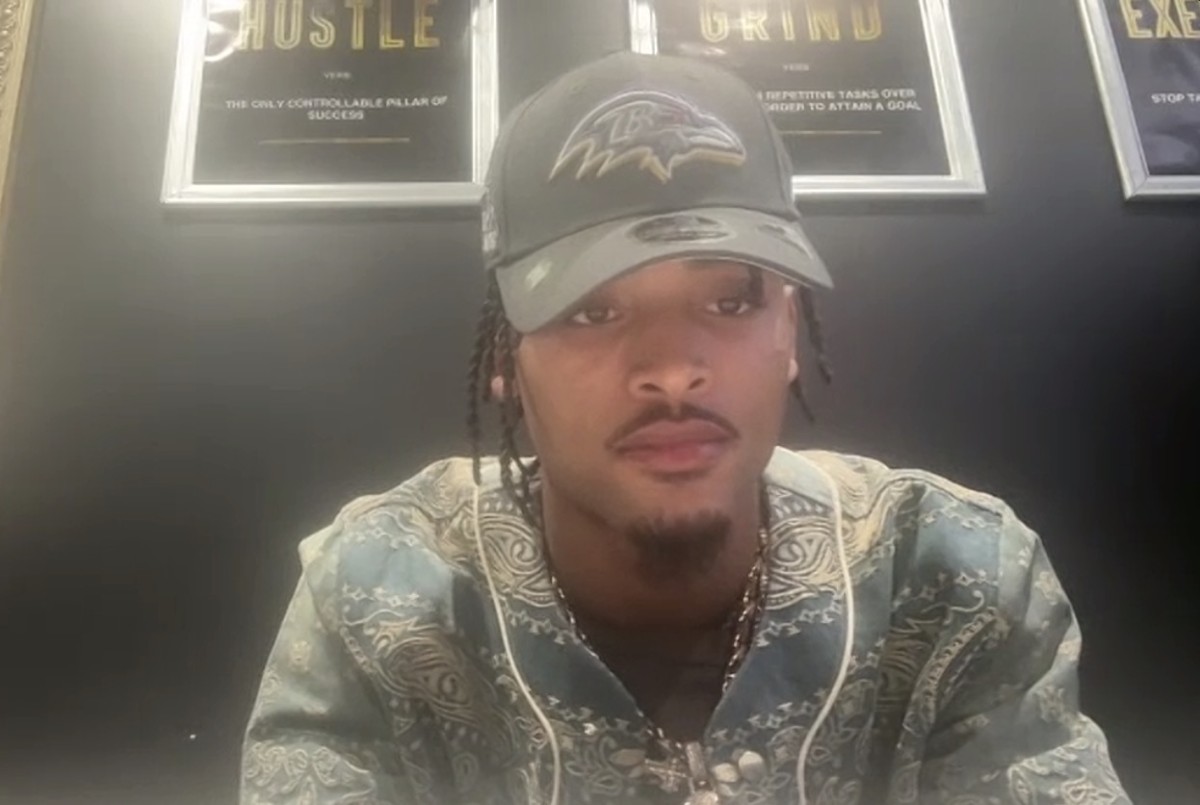The most iconic player in franchise history.
Pro Bowl talents.
First-round standouts and unknowns eventually blossoming into starters.
No position epitomizes the 24-year history of the Ravens better than inside linebacker. From Ray Lewis and C.J. Mosley to Bart Scott, Jameel McClain, Dannell Ellerbe, and Zach Orr, there’s been no shortage of success stories at the position, regardless of their origin.
But 2019 brought an abrupt shift when Mosley, a four-time Pro Bowl selection in his first five years, signed an $85 million contract with the New York Jets. For only the second season in franchise history — the other being 2013 after Lewis’ retirement — the Ravens were without a Pro Bowl talent or former first-round pick at the position. Baltimore endured a problematic September before stabilizing the position with the veteran signings of Josh Bynes and L.J. Fort and adequately mixing and matching in various sub packages the rest of the way.
General manager Eric DeCosta now hopes to find a more stable answer in next week’s draft after beefing up the defensive line with the acquisitions of five-time Pro Bowl selection Calais Campbell and Derek Wolfe last month. But finding the ideal three-down player at inside linebacker is easier said than done in an ever-changing NFL.
“It used to be that we wanted these really, really big and strong, physical guys,” DeCosta said. “I think the league has kind of morphed into more of a speed league in some respects. You need guys that can run and cover and blitz and do all those things, but you also need a guy that can effectively play the run and take on guys. In a perfect world, you like to have a bigger guy, but you’re also looking for a bigger guy who can run.”
With Clemson phenom Isaiah Simmons almost universally projected to go in the top 10, draft pundits and fans alike have discussed Oklahoma’s Kenneth Murray and LSU’s Patrick Queen as potential fits for the Ravens with the 28th overall pick. Asked about the two prospects last week, DeCosta said it “depends what flavor you like” and anticipates each being selected in the first 40 picks or so.
The Ravens are no strangers to taking Oklahoma talent after selecting Pro Bowl tight end Mark Andrews, Pro Bowl right tackle Orlando Brown Jr., top wide receiver Marquise Brown, and guard Ben Powers in the last two drafts, but the explosive and physical Murray thrived on the other side of the ball with more than 300 tackles and 9 1/2 sacks as a three-year starter. Though the 6-foot-2, 241-pound linebacker didn’t stand out quite as much in coverage with a total of six pass breakups and no interceptions over three seasons, Murray possesses ideal traits for the next level.
“He’s been a very, very productive player, a tremendous athlete, a cerebral guy. He’s got really good length,” DeCosta said. “He’s been a really, really good defensive player on a team that hasn’t really had a lot of really good defensive players lately. Oklahoma’s been known primarily for their offense in the last four, five, six, seven years. Kenneth Murray’s been probably one of their very best defensive players. I think he’s a good prospect. I think he’s a great student of the game. He’s got great intangibles.”
In contrast, Queen was a breakout performer for a stout defensive program after playing sparingly the previous two seasons, registering 85 tackles, three sacks, one interception, and three pass breakups as a first-year starter in 2019. At 6-foot and 229 pounds, the LSU product is a more lateral than downhill player, but his strength in coverage makes him very appealing in today’s pass-happy NFL.
There’s also the perception of Queen being a late bloomer with a higher ceiling, which can be a blessing or a curse in the long run.
“He’s not as big as Murray. He’s very, very explosive,” DeCosta said. “LSU has put a number of really, really good defensive players in the league over the last four or five years. He’s a guy that is sidelined to sideline. He can play downhill. He’s a very good cover linebacker. He kind of came on the scene this year. He was not a household name before this year. He played his best football probably over the second half of the season with some really, really good performances in the playoffs and the national championship.”
Of course, there’s no guarantee that either will be available by the time the Ravens are on the clock since multiple teams in the first round seek help at the position. That’s where the organization can embrace the experiences of last season when defensive coordinator Wink Martindale effectively rotated multiple options with different strengths.
Run-stopping linebackers such as Jordyn Brooks of Texas Tech and Malik Harrison of Ohio State or coverage standouts like Oregon’s Troy Dye, Appalachian State’s Akeem Davis-Gaither, and Mississippi State’s Willie Gay may not offer the same package as Simmons, Murray, or Queen, but they can still serve as good solutions to improve the second level of the defense in 2020 and beyond. Teams can dream about finding their next Hall of Famer or Pro Bowl talent at a position of need, but winning the draft is about maximizing value and identifying puzzle pieces that can fit in a variety of ways.
“When we look at the guys throughout the draft, there are players that can help us in specific roles,” director of player personnel Joe Hortiz. “There are guys in the mid-rounds that can come in and cover, maybe play the run. Knowing our coaches [and] the versatility that we play with on defense, as scouts, we’re able to identify, ‘Hey, this is what this guy can do for us. This is what we believe this guy can do for us.’
“It helps us evaluate players that maybe can’t do all the things but can do one thing well.”











